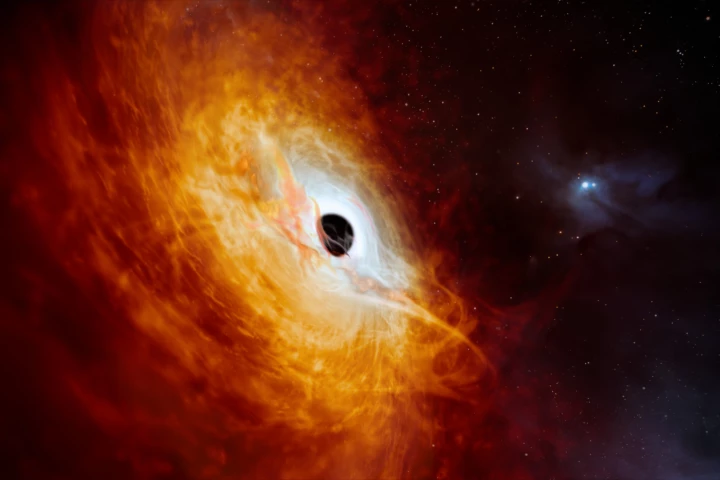Very Large Telescope
-
The brightest object in the known universe has just been found. It's a supermassive black hole with the mass of 17 billion Suns, and it swallows another Suns’ worth of material every day, making it also the fastest-growing black hole ever found.
-
“Astronomers discover a completely unknown object floating around in space” is a common news theme, but it’s fun every time. The latest is a brand new type of star – ancient red giants the team has nicknamed “Old Smokers.”
-
Astronomers have detected one of the most energetic explosions in the history of the universe: a gamma ray burst from a neutron star collision. For the first time ever, heavy metals were detected in the explosion, totaling hundreds of Earths in mass.
-
The exoplanets WASP-76 b and WASP-121 b are already known to be peculiar places, but a new discovery has raised even more questions about the composition of the exotic atmospheres around these celestial bodies.
-
Astronomers have discovered the first known quadruple asteroid system. A team from Thailand and France spotted a third moon orbiting the main-belt asteroid Elektra, moving the object into the record books.
-
Astronomers have counted the number of neutrons inside carbon atoms from 2.8 quadrillion km away. The team managed to measure the ratios of carbon isotopes in the atmosphere of an exoplanet for the first time, which can tell us about how it formed.
-
Astronomers say they’ve closed the case on the mysterious and unprecedented dimming of the supergiant star Betelgeuse in 2019 and 2020. A new study says that the event was caused by a combination of a big dust cloud and a drop in temperature.
-
The dual disk structure of our home galaxy may not be as unique as once thought, according to the results of a new study that probed the cross section of a spiral galaxy orbiting the Milky Way, some 320 million light years from Earth.
-
The first comet known to visit our Sun after being born around an alien star may be the most pristine comet ever discovered, new research has found.
-
On a scale that’s hard to fathom, the universe is structured like a “cosmic web." Astronomers have now directly observed light from filaments in this web, by staring at a patch of sky with a deep-field telescope to detect faint dwarf galaxies.
-
Astronomers have witnessed a rare celestial light show – a star being stretched into “spaghetti” by a black hole. More than 200 million light-years from Earth, the dying star was ripped to shreds by immense gravitational forces over six months.
-
Although astronomers have detected over 4,000 planets outside our solar system, most of them appear as points of data. Now, astronomers have captured a very rare sight, with an image of two exoplanets orbiting a star very much like our own.
Load More











